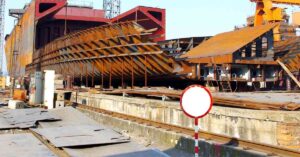

Workshop technology is the backbone of any engineering industry and when it comes to shipping, it becomes the most important aspect which is responsible for planning, construction and operation of a ship and its machinery. In this article, we will discuss the most common work shop technology elements which are widely used in shipping industry, both in ship and on shore.
Any construction and operation of shipping structure or machinery is not possible without the following workshop practices:
It is the process by which metals are joined by heating and melting the metals and simultaneously adding filler material. This forms a weld pool and makes a strong joint when cooled down. It functions on the principle of coalescence. Welding is widely used for fabrication and maintenance operations. Different types of welding are electric arc, laser, electronic beam etc but the most famous out of these is electric arc welding.
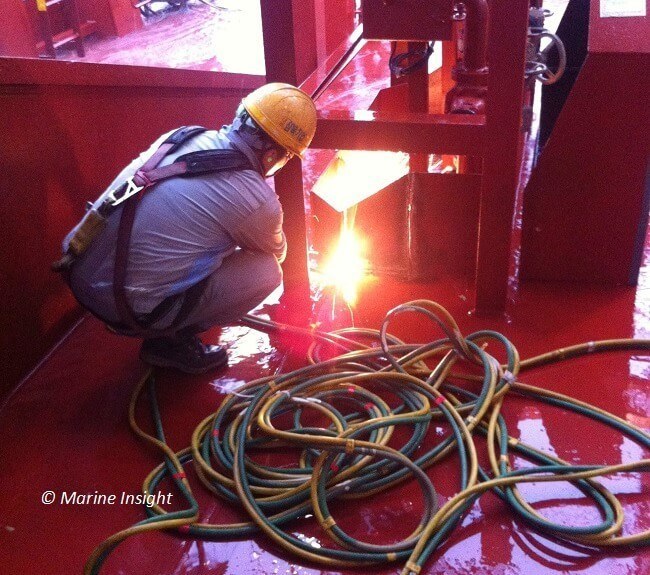

It is the process of joining metals by heating base metals at a temperature of 800°F after which a nonferrous filler metal with a melting point well below the base metal is added to form a strong joint by capillary action. When brazing is done, flux is used as it prevents the oxide formation while the metal is heated
Gas cutting is the process of cutting metals by application of high temperature flame or torch produced by combination of two gases-oxygen and acetylene. It is the most common method used on board ship. Other metals cutting procedures are carbon air cutting, plasma arc cutting etc.
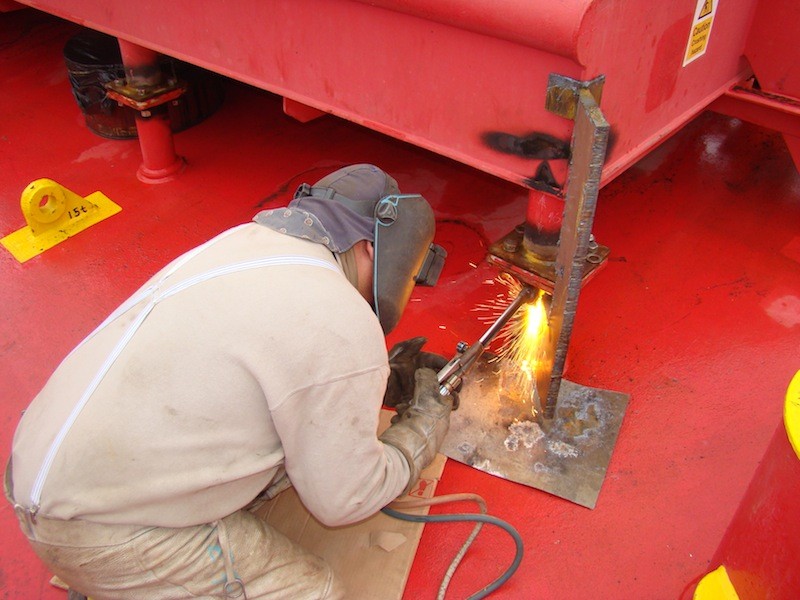

It is a heat treatment process done to induce ductility in the metal. Material is heated above its recrystallization temperature and then it is cooled down which relieves its internal stresses and refines the structure.
It is a process of fastening a metal in another metal by the use of riveting machine and small cylindrical shaft with head in one end. It is not as strong as annealing and welding but still comes handy in different parts of the ship.
A lathe machine is one of the most important parts of the ship’s workshop as it is used for various purposes such as manufacturing, cutting, shaping and checking different spares and parts of the ship.
With number of tools different operation can be performed on lathe like, machining, surface finishing, thread making, gear making, knurling etc.
It is a process of cutting or enlarging a cylindrical hole in a solid material. This is done by applying a rotational pressure on top of the metal through a strong drill bit.
Drill bit is a drilling tool made up of a higher strength metal like high speed steel or cobalt steel alloy.
This process is used to smoothly cut the metal and to remove edges from the metal. In this process a grinding machine is used which rotates a highly abrasive grinding wheel acting as a cutting tool. The grains on the wheel cuts off a piece of metal by shear deformation.
It is the process of cleaning and removing debris and hard deposits like carbon and sludge from the surface of the metals. A buffing wheel or buffing tool, which is a metal wire wheel, is attached to a portable hand driven buffing machine or an installed buffing wheel.
It is a process of making threads in a hole of metal. Worn out threads are restructured by using taps and drills. Tapping tools are used in series to get a perfect thread. The tools are plug tap, intermediate tap and taper tap.
It is the process of removing or extracting a broken part of bolt or metal which is threaded in a hole. Extracting tool is fitted after drilling a hole in the metal or bolt to be removed. It is a reverse tap and turns the thread in the direction of the drawn pitch.
This is just a brief overview of the main activities that takes place in marine workshop. The workshop practices used on board ship does not end here. Please add more by putting in your comments.
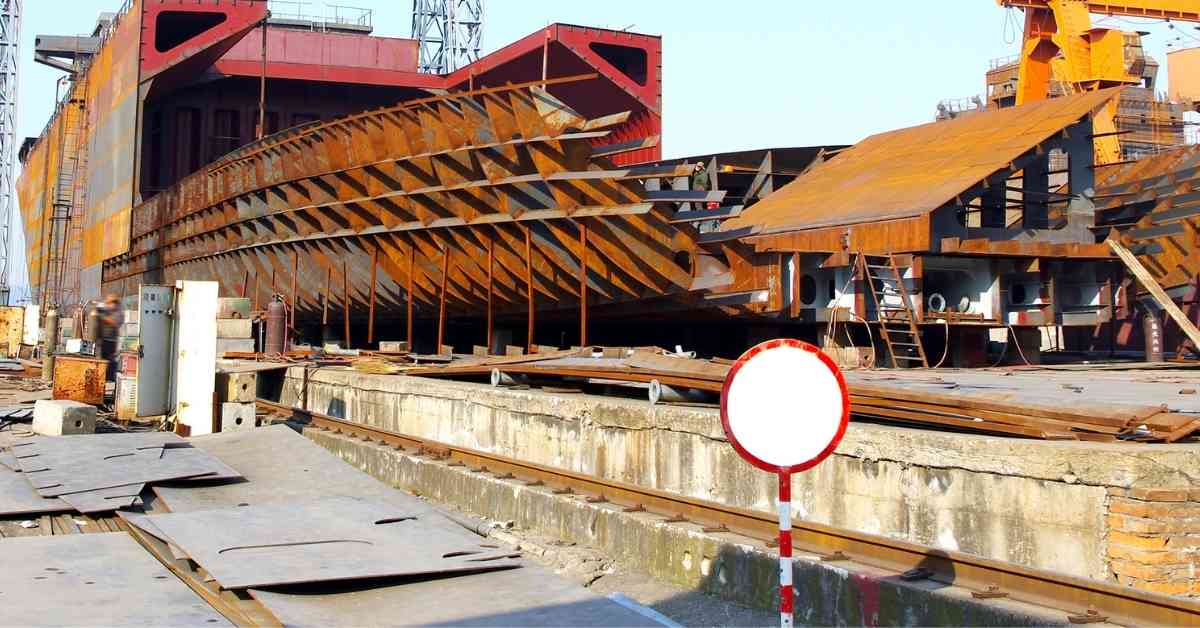



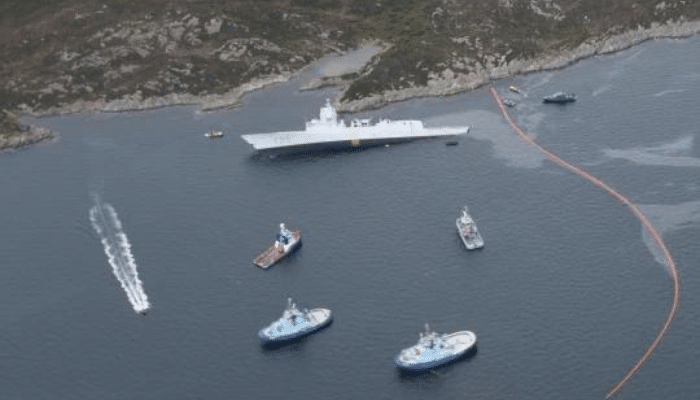

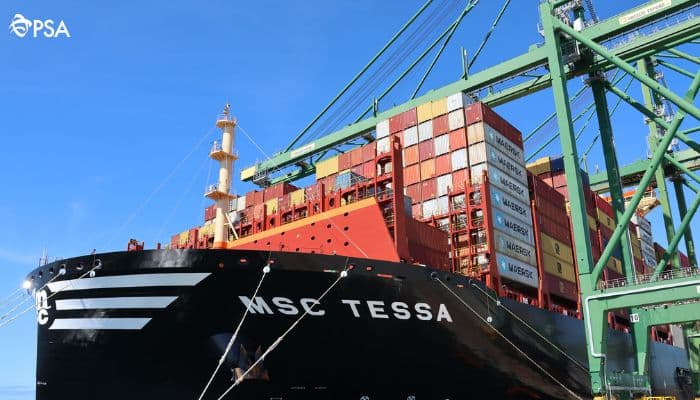

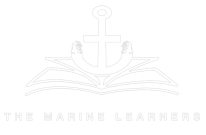

We believe that knowledge is power, and we’re committed to empowering our readers with the information and resources they need to succeed in the merchant navy industry.
Whether you’re looking for advice on career planning, news and analysis, or just want to connect with other aspiring merchant navy applicants, The Marine Learners is the place to be.